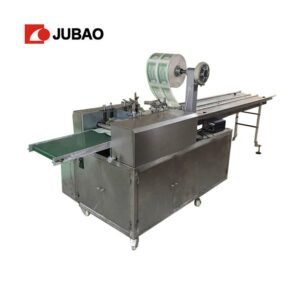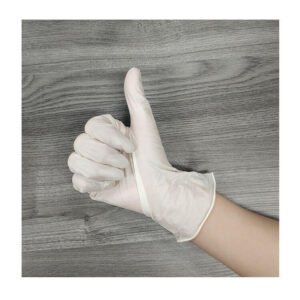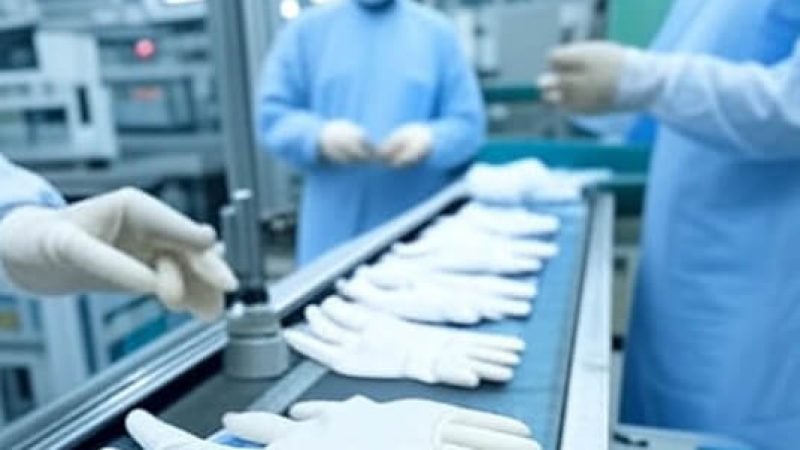How Are Surgical Gloves Manufactured? A Complete Guide to the Production Process
Table of Contents
- Introduction
- Types of Surgical Gloves
- Raw Materials Used in Production
- The Manufacturing Process
- Quality Control and Testing
- Surgical Gloves Machine Technology
- Packaging and Sterilization
- Environmental Considerations
- Future Trends in Manufacturing
- Conclusion
Introduction
Surgical gloves are critical medical devices that protect both healthcare professionals and patients from cross-contamination during medical procedures. The manufacturing of these essential protective barriers involves sophisticated processes and advanced surgical gloves machine technology to ensure consistent quality, durability, and safety standards.
Understanding how surgical gloves are manufactured provides insight into the complex engineering and quality control measures required to produce millions of gloves daily for global healthcare systems. This comprehensive guide explores every aspect of the production process, from raw materials to final packaging.
Types of Surgical Gloves
Natural Rubber Latex Gloves
Traditional surgical gloves made from natural rubber latex offer excellent tactile sensitivity and barrier protection. However, latex allergies have led to increased demand for alternative materials.
Synthetic Alternatives
Modern surgical gloves machine systems can produce various synthetic options:
- Nitrile gloves: Chemical-resistant and latex-free
- Vinyl gloves: Cost-effective for short-term use
- Neoprene gloves: Hypoallergenic with superior puncture resistance

Raw Materials Used in Production
Primary Materials
The foundation of surgical glove manufacturing begins with carefully selected raw materials:
Natural Rubber Latex: Harvested from rubber trees (Hevea brasiliensis), this milky fluid contains polymer chains that provide elasticity and strength.
Synthetic Polymers: For non-latex alternatives, manufacturers use:
- Acrylonitrile butadiene (nitrile)
- Polyvinyl chloride (PVC)
- Chloroprene (neoprene)
Chemical Additives
Modern surgical gloves machine operations incorporate various additives:
- Accelerators: Speed up the vulcanization process
- Activators: Enhance chemical reactions
- Antioxidants: Prevent degradation during storage
- Sulfur: Creates cross-links between polymer chains
The Manufacturing Process
Mold Preparation
The manufacturing process begins with aluminum hand-shaped molds that replicate human hand anatomy. These molds undergo thorough cleaning and are heated to approximately 60°C (140°F) before entering the production line.
Coagulant Application: A calcium nitrate or calcium chloride solution is applied to the heated molds, creating a thin film that will help the latex adhere properly during dipping.
Dipping Process
The heart of any surgical gloves machine system lies in its dipping mechanism:
First Dip: Clean, heated molds are immersed into a latex compound tank for 10-15 seconds. The depth and duration determine glove thickness.
Gel Formation: After dipping, molds pass through a gelation oven at 100°C (212°F) for 2-3 minutes, causing the latex to gel and form the glove structure.
Second Dip (Optional): For enhanced thickness and durability, some gloves undergo a second dipping process.
Vulcanization and Curing
Heat Treatment: Molds with formed gloves enter vulcanization ovens heated to 120-130°C (248-266°F) for 20-30 minutes. This process:
- Cross-links polymer chains
- Improves elasticity and strength
- Reduces tackiness
- Enhances chemical resistance
Cooling Phase: Gradual cooling prevents thermal shock and maintains glove integrity.
Stripping and Collection
Automated Stripping: Modern surgical gloves machine systems use compressed air and mechanical strippers to remove cured gloves from molds without damage.
Quality Inspection: Each glove undergoes visual inspection for:
- Tears or holes
- Thickness uniformity
- Proper cuff formation
- Surface defects
Quality Control and Testing
Physical Property Testing
Manufacturers conduct rigorous testing throughout production:
Tensile Strength: Measures the force required to break the glove material
Elongation: Tests flexibility and stretch capabilities
Modulus: Evaluates stiffness and barrier properties
Leak Testing
Water Leak Test: Each glove is filled with water and inspected for pinhole leaks
Air Leak Test: Pressurized air testing identifies microscopic defects
Biocompatibility Assessment
Surgical gloves must pass strict biocompatibility tests:
- Cytotoxicity testing
- Sensitization studies
- Irritation assessments
- Endotoxin level verification
Surgical Gloves Machine Technology
Automated Production Lines
Modern surgical gloves machine technology has revolutionized manufacturing efficiency:
Continuous Conveyor Systems: Transport molds through each production stage automatically, reducing manual handling and contamination risks.
Computer-Controlled Dipping: Precise control of:
- Immersion depth
- Dwell time
- Temperature regulation
- Chemical concentration
Modern Equipment Features
Advanced Monitoring Systems: Real-time monitoring of:
- Temperature profiles
- Chemical composition
- Production speed
- Quality metrics
Robotics Integration: Surgical gloves machine systems increasingly incorporate:
- Automated mold cleaning
- Defect detection systems
- Packaging robotics
- Material handling equipment
Packaging and Sterilization
Primary Packaging
Surgical gloves require specialized packaging to maintain sterility:
Individual Wrapping: Pairs of gloves are sealed in medical-grade pouches with peel-open seals for aseptic presentation.
Sterility Indicators: Chemical indicators verify sterilization effectiveness.
Sterilization Methods
- Gamma Radiation: Most common method using cobalt-60 radiation
- Ethylene Oxide (EO): Gas sterilization for temperature-sensitive materials
- Electron Beam: Rapid sterilization for high-volume production
Environmental Considerations
Sustainable Manufacturing
Modern surgical gloves machine operations increasingly focus on environmental responsibility:
- Water Recycling: Closed-loop water systems reduce consumption
- Energy Efficiency: Heat recovery systems and LED lighting
- Waste Reduction: Minimizing material waste through precise controls

End-of-Life Management
Manufacturers are developing:
- Biodegradable glove formulations
- Recycling programs for used gloves
- Sustainable packaging materials
Future Trends in Manufacturing
Industry 4.0 Integration
Next-generation surgical gloves machine technology incorporates:
- Internet of Things (IoT): Connected sensors providing real-time production data
- Artificial Intelligence: Predictive maintenance and quality optimization
- Digital Twins: Virtual production models for process optimization
Material Innovation
Research continues into:
- Bio-based synthetic materials
- Enhanced barrier properties
- Improved tactile sensitivity
- Antimicrobial surface treatments
Customization Capabilities
Future manufacturing may include:
- Size-specific production runs
- Custom grip patterns
- Specialized coatings for specific procedures
Conclusion
The manufacture of surgical gloves represents a sophisticated blend of chemistry, engineering, and quality assurance. Modern surgical gloves machine technology has transformed production from labor-intensive processes to highly automated, quality-controlled operations capable of producing millions of gloves daily.
As healthcare demands continue to grow and safety standards become increasingly stringent, manufacturers must balance efficiency with quality, sustainability with cost-effectiveness. The future of surgical glove manufacturing lies in smart automation, sustainable practices, and continued material innovation to meet the evolving needs of global healthcare systems.
Understanding this manufacturing process helps healthcare professionals appreciate the complexity behind these seemingly simple yet critical medical devices that protect patients and providers alike. The investment in advanced surgical gloves machine technology ensures that surgical gloves will continue to meet the highest standards of safety and performance required in modern medical practice.
